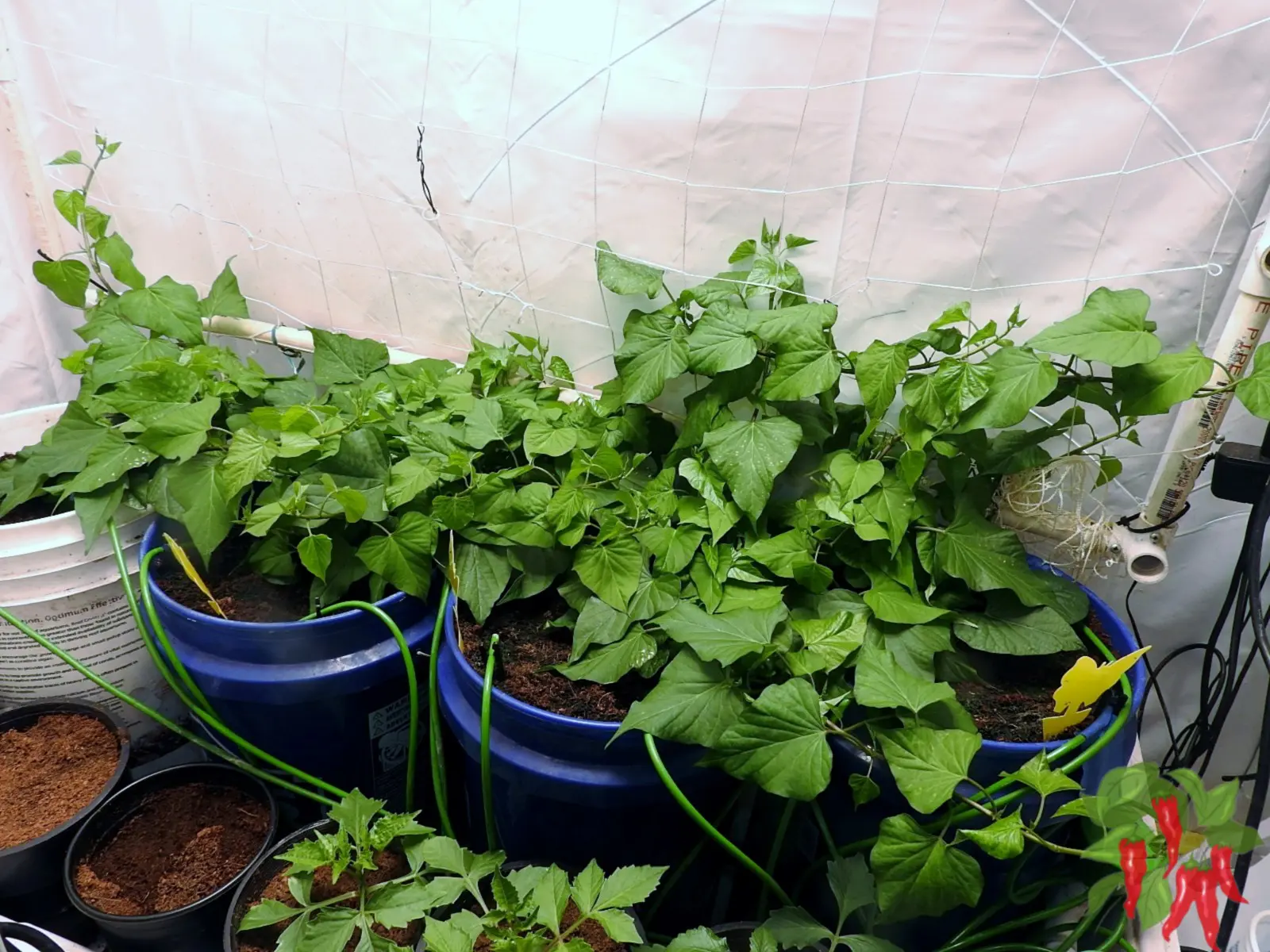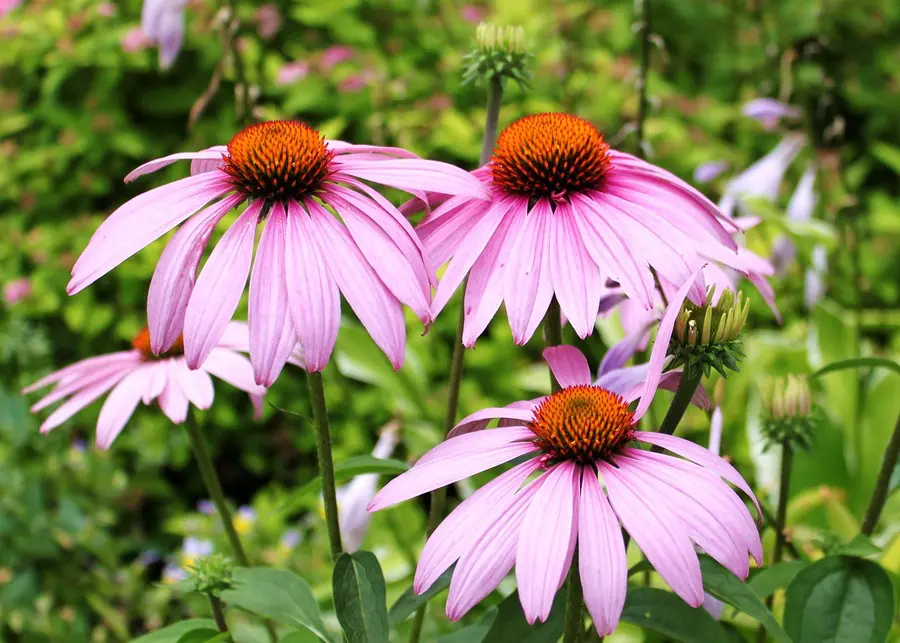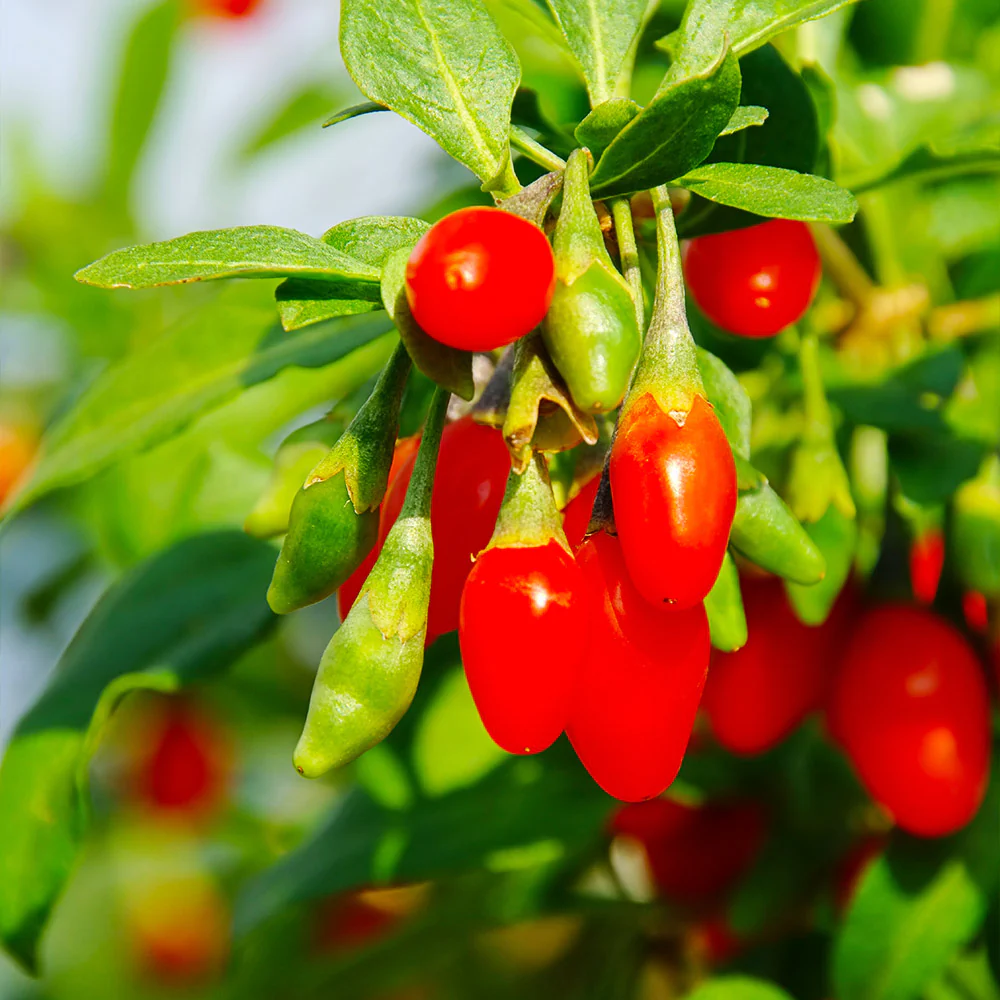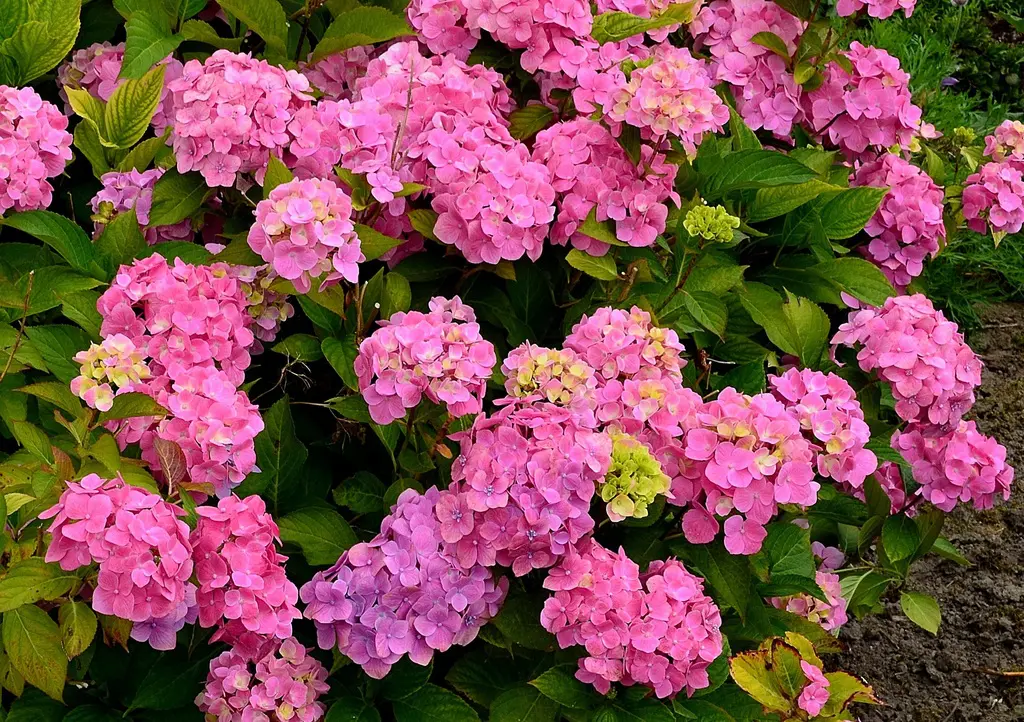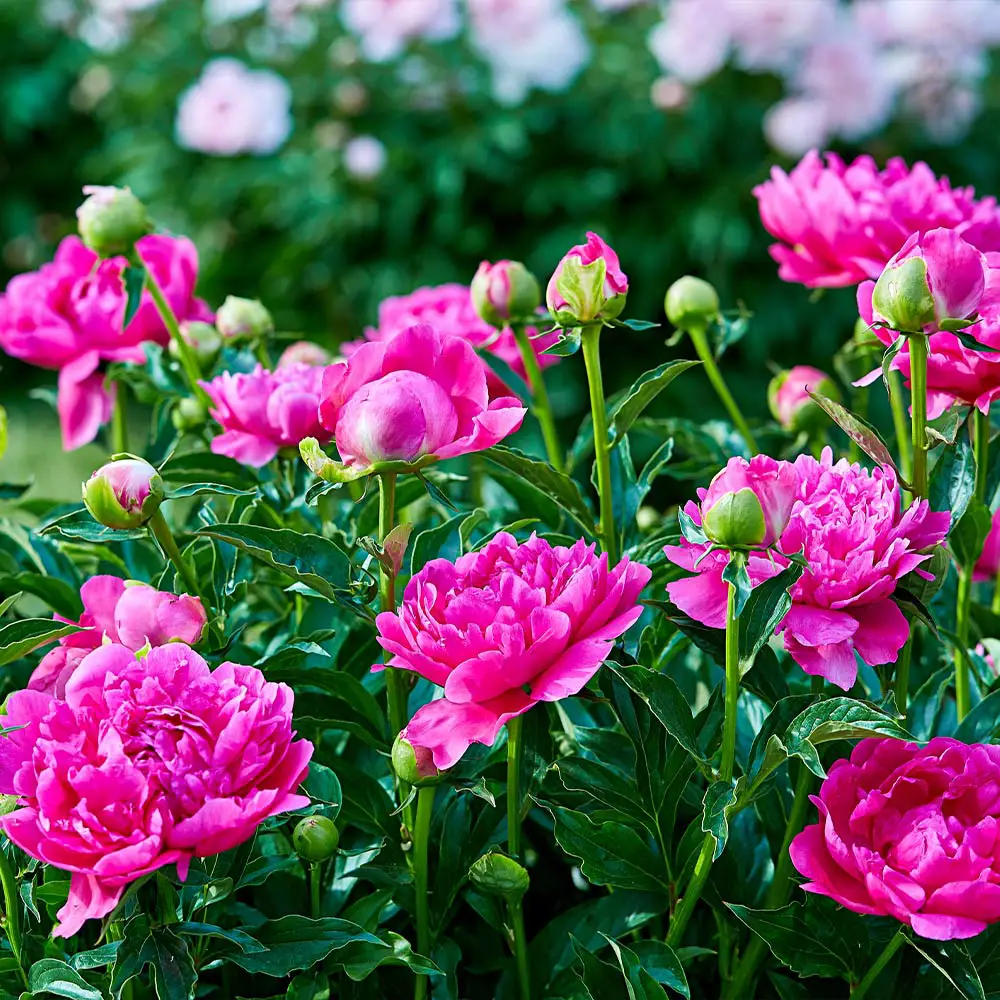This post contains affiliate links. If you buy something from one of our links we may earn a commission. Thanks
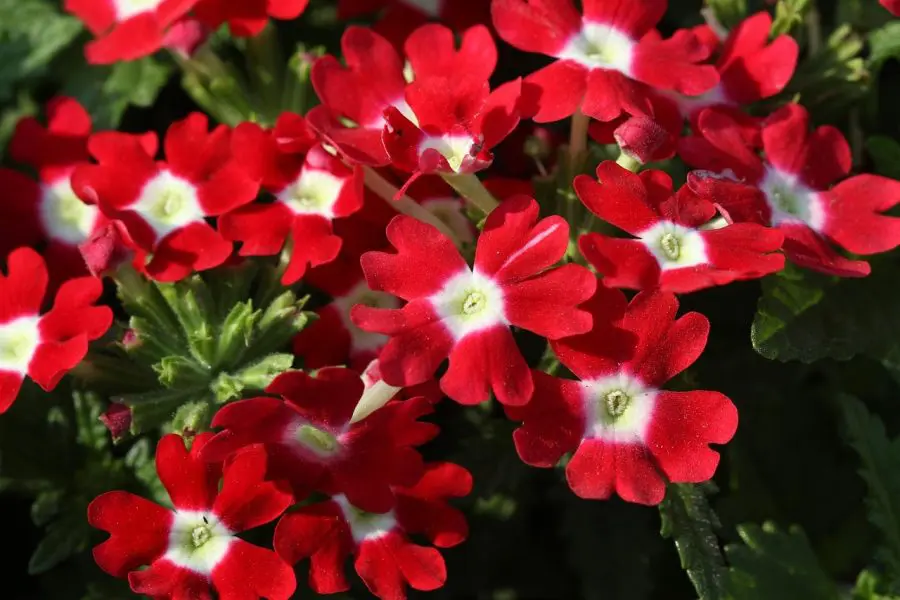
Discover the joy of growing vibrant Verbena in pots! Our guide on ‘how to care for Verbena in pots’ offers easy, practical tips for a blooming garden. Join us!
To care for Verbena in pots, use well-draining soil and place the pot in a sunny location for at least 8 hours of direct sunlight per day. Water moderately, allowing the top inch of soil to dry out between waterings. Fertilize every 4-6 weeks during the growing season, and deadhead spent blooms to encourage new flowers.
Are you ready to add a splash of color to your patio or balcony? Well, you’re in the right place!
Our guide on ‘how to care for Verbena in pots’ is here to help you navigate the exciting journey of nurturing these vibrant blooms.
With their dazzling array of colors and hardy nature, Verbena plants are a fantastic choice for container gardening.
So, let’s dive in and explore the world of Verbena together!
Introduction to How To Care For Verbena In Pots
Welcome to our comprehensive guide on ‘How to Care for Verbena in Pots’.
If you’ve ever wondered about the best practices for nurturing these vibrant Verbena flowers, you’re in for a treat!
In this guide, we’ll explore everything from understanding what Verbena is and the ideal conditions it needs to thrive, to choosing the right varieties for your pots.
We’ll also delve into the specifics of planting, propagating, and caring for your Verbena, including tips on dealing with common problems and overwintering.
So, whether you’re a seasoned gardener or just starting out, this guide has something for everyone.
Let’s embark on this gardening adventure together!
What is Verbena?
Let’s start with the basics. Verbena, also known as vervain, is a delightful plant known for its vibrant and colorful flowers.
These flowers bloom in clusters, creating a stunning display that can transform any garden or balcony.
But it’s not just about looks; Verbena is also loved for its hardy nature, making it a great choice for both novice and experienced gardeners.
Verbena also known as vervain or verveine, is a genus in the family Verbenaceae. It contains about 150 species of annual and perennial herbaceous or semi-woody flowering plants. The majority of the species are native to the Americas and Asia; however, Verbena officinalis, the common vervain or common Verbena, is the type species and native to Europe. https://en.wikipedia.org/wiki/Verbena
Varieties of Verbena
There’s a whole world of Verbena varieties out there, each with its unique charm.
From the dazzling ‘Lanai Royal Purple with Eye’ with its bright purple flowers to the ‘Superbena’ series bred to resist powdery mildew, there’s a Verbena for every taste.
And let’s not forget the lemon Verbena, a variety known for its delightful citrusy fragrance.
Blue Vervain (Verbena hastata) is a striking perennial plant native to North America. It’s known for its tall, slender growth habit and vibrant purplish-blue flowers that bloom from early to late summer. The plant can reach heights of up to 6 feet and is a favorite among butterflies, making it an excellent choice for a butterfly or wildlife garden. Blue Vervain prefers full sun to partial shade and thrives in moist, well-drained soils. It’s hardy in USDA zones 3 to 8, making it a versatile choice for many different climates.
Ideal Conditions for Growing Verbena
Like all plants, Verbena has its preferred growing conditions. It loves a spot with plenty of sunlight, at least six hours a day. It also prefers well-drained soil that’s slightly acidic to neutral.
Verbena sun or shade?
Here’s a question we often get: does Verbena prefer sun or shade? The answer is the sun! Verbena thrives in full sun, so make sure your pots are placed in a location that gets plenty of it.
Soil Preferences
When it comes to soil, Verbena isn’t too picky. However, it does prefer well-draining soil. We recommend a mix of coco coir and perlite. This combination ensures good drainage, preventing root rot and other issues associated with overwatering.
Verbena Watering
Watering is an essential part of Verbena care. These plants like their soil to be moderately moist but not soggy. A good rule of thumb is to water them thoroughly and then allow the top inch of soil to dry out before watering again.
Temperature and Humidity Tolerance
Verbena is a hardy plant that can tolerate a range of temperatures and humidity levels. However, it does best in warmer climates and can tolerate short periods of drought.
The Benefits and Advantages of Growing Verbena in Pots
Finally, let’s talk about the benefits of growing Verbena in pots. Firstly, it allows you to control the growing conditions more easily.
You can move the pots around to ensure they get enough sunlight, and you can easily adjust the watering and soil conditions.
Secondly, potted Verbena is perfect for those with limited space. Even if you don’t have a large garden, you can still enjoy the beauty of Verbena on your balcony or patio.
Plus, there’s something incredibly satisfying about caring for a plant and watching it bloom in response to your care.
Choosing the Right Verbena Varieties for Your Pot
Ready to bring the vibrant beauty of Verbena to your own pots? Fantastic!
But before we get our hands dirty, let’s take a moment to consider which variety of Verbena is the best fit for your pot and your personal preferences.
With so many stunning varieties to choose from, picking the right one can feel a bit overwhelming.
But don’t worry, we’re here to help you navigate this colorful world. In this section, we’ll discuss the factors to consider when choosing a Verbena variety for your pots and recommend some varieties that are particularly well-suited for pot cultivation.
Let’s find the perfect Verbena for you!
Factors to Consider When Choosing Verbena for Pots
Choosing the right variety of Verbena for your pots involves a few considerations.
Firstly, think about the size of your pot. Some varieties of Verbena are more compact, while others have a trailing habit that looks stunning in hanging baskets or larger pots.
Secondly, consider the location of your pot. Will it be in full sun, or does the spot get a bit of shade?
While all Verbenas love the sun, some varieties are more tolerant of partial shade than others.
Lastly, think about the color and style you want to achieve. Verbena comes in a range of colors, from vibrant purples and pinks to more subtle whites and blues.
Some varieties also have unique features like bicolor flowers or contrasting ‘eyes’.
Recommended Varieties for Pot Cultivation
Now, let’s talk about some specific varieties that are great for pot cultivation.
‘Lanai Royal Purple with Eye’ is a compact variety that’s perfect for smaller pots. It has bright purple flowers with contrasting white eyes that create a stunning display.
‘Superbena’ series is another excellent choice. These Verbenas are bred to resist powdery mildew, making them a hardy choice for pots.
They come in a range of colors, including white and various shades of lavender.
If you’re looking for a trailing variety for a hanging basket or larger pot, consider ‘Tapien Blue Violet’.
This variety has beautiful blue-violet flowers and a trailing habit that can reach up to 3 feet.
Remember, the best variety for you is the one that fits your personal preferences and the specific conditions of your pot’s location. Happy planting!
Planting Verbena in Pots
Alright, now that we’ve chosen the perfect Verbena variety for our pots, it’s time to get planting!
Whether you’re a seasoned gardener or this is your first foray into the world of potted plants, the process of planting Verbena in pots is a rewarding experience.
In this section, we’ll guide you through the steps, from deciding when to plant to the actual planting process.
So, let’s roll up our sleeves and get our Verbena off to a great start!
When to Plant Verbena
Timing is everything when it comes to planting Verbena.
These sun-loving plants are best planted in the late spring after the threat of frost has passed.
Verbena plants love warmth, so they’ll appreciate being planted when the days are getting longer and the temperatures are starting to rise.
If you’re starting your Verbena from seeds indoors, you’ll want to start them about 8 to 10 weeks before the last expected frost in your area.
This gives the seedlings plenty of time to grow strong before they’re moved outdoors.
How to Plant Verbena in Pots
Now, let’s dive into the actual planting process. First, you’ll need a pot with good drainage.
Verbena doesn’t like to sit in waterlogged soil, so make sure your pot has drainage holes in the bottom to allow excess water to escape.
Next, fill your pot with a good quality potting mix. You can enhance the drainage and aeration of the mix by adding some perlite or coco coir, as recommended in the introduction.
Make a hole in the center of the pot that’s deep enough to accommodate the root ball of your Verbena plant.
If you’re planting seedlings, the hole will need to be shallower – just deep enough to cover the roots.
Place your Verbena plant or seedling in the hole, making sure it’s standing upright.
Then, gently backfill the hole with your potting mix, pressing it down lightly to remove any air pockets.
Finally, water your newly planted Verbena thoroughly.
This will help settle the soil around the roots and ensure your plant has enough moisture to start establishing itself in its new home.
Remember, Verbena loves the sun, so place your pot in a location where it will get plenty of light.
With the right care, you’ll soon have a beautiful, blooming Verbena to enjoy!
Verbena In Hanging Baskets
Have you ever considered the charm of Verbena cascading from a hanging basket? It’s a sight to behold!
The trailing varieties of Verbena are perfect for adding a splash of color to porches, patios, or even indoor spaces.
In this section, we’re going to explore the world of Verbena in hanging baskets.
We’ll discuss everything from the best types of Verbena for your hanging basket, to what other plants pair well with Verbena.
So, let’s elevate our gardening game and let our Verbena reach new heights!
Trailing Verbena Hanging Basket
Trailing Verbena is a real showstopper when planted in a hanging basket.
Its vibrant flowers spill over the sides of the basket, creating a waterfall of color that lasts from spring until the first frost.
To plant trailing Verbena in a hanging basket, first ensure your basket has drainage holes.
Then, fill it with a high-quality potting mix, plant your Verbena, and water it thoroughly.
Remember to place your hanging basket in a location where the Verbena will get plenty of sun.
With regular watering and occasional feeding, your trailing Verbena will reward you with a stunning display.
What to Plant with Verbena in Pots
When it comes to choosing companion plants for your potted Verbena, consider plants that have similar care needs.
Petunias, geraniums, and marigolds are all sun-loving flowers that do well in pots and can complement the vibrant colors of Verbena.
For a striking contrast, consider pairing your Verbena with foliage plants like sweet potato vine or creeping jenny.
These plants have trailing habits and eye-catching leaves that can add depth and interest to your pot.
Verbena Companion Plants
In the garden, Verbena pairs well with a variety of plants.
Its vibrant flowers can add a pop of color to perennials like salvia, coreopsis, and daylilies.
Verbena also makes a great partner for roses, with its continuous bloom providing color when the roses are between flushes.
If you’re growing Verbena in a butterfly garden, consider planting it alongside other butterfly favorites like milkweed, butterfly bush, and zinnias.
With the right companions, your Verbena can be part of a stunning garden display that’s full of life and color.
Verbena Propagation Methods
Ready to multiply your Verbena collection? Propagation is a cost-effective way to increase the number of plants in your garden, and Verbena makes it easy for us.
Whether you’re a seasoned gardener or a beginner, you’ll find Verbena propagation a rewarding experience.
In this section, we’ll explore the different methods of propagating Verbena, from sowing seeds to taking cuttings and even division.
Let’s dive in and learn how to create a bounty of beautiful Verbena plants!
Propagation by Seeds
Starting Verbena from seeds can be a rewarding process. Here’s a step-by-step guide:
• Start by purchasing Verbena seeds from a reputable supplier.
• Fill a seed tray or small pots with A good quality potting mix or seed compost.
• Sow the seeds on the surface of the compost. They’re tiny, so try to spread them as evenly as possible.
• Lightly cover the seeds with a thin layer of compost or vermiculite. Verbena seeds need light to germinate, so don’t bury them too deep.
• Water the seeds gently using a fine spray to avoid disturbing them.
• Cover the tray or pots with a clear plastic bag or place them in a propagator.
This helps to maintain a humid environment which is ideal for germination.
• Place the tray in a warm, bright place but out of direct sunlight.
Once the seedlings are large enough to handle, usually when they have two sets of true leaves, you can transplant them into individual pots.
Propagation by Stem Cuttings
Propagating Verbena from cuttings is another effective method. Here’s how to do it:
• Choose a healthy Verbena plant. Look for new growth that’s not yet flowered.
• Using a sharp, clean pair of gardening scissors or a knife, cut a 3-4 inch piece from the tip of the stem.
• Remove the leaves from the bottom half of the cutting.
• Dip the cut end into a rooting hormone. This step is optional, but it can help to encourage root development.
• Plant the cutting into a pot filled with a mix of coco coir and perlite or a good quality potting compost.
• Water the cutting well and place it in a warm, bright place but out of direct sunlight.
• Keep the soil moist but not waterlogged.
• In a few weeks, the cutting should develop roots and can be transplanted into a larger pot or directly into the garden.
Propagation by Division
Division is a great way to propagate perennial Verbena varieties. Here’s a step-by-step guide:
• Choose a mature Verbena plant. The best time for division is in the early spring or fall.
• Dig up the entire plant, being careful not to damage the roots.
• Using a sharp knife, divide the plant into sections.
• Each section should have a good amount of roots and at least one or two shoots.
• Replant the divisions immediately into prepared soil or pots filled with potting compost.
• Water the new plants well and keep them in a sheltered spot until they’re established.
Remember, whichever method you choose, patience is key. Propagation can take a few weeks, but the reward of new Verbena plants is well worth the wait!
How To Care for Verbena
Once you’ve got your Verbena planted and settled in their new homes, it’s time to ensure they thrive.
Caring for Verbena might seem like a daunting task, but don’t worry, these plants are quite forgiving and easy to maintain.
In this section, we’ll walk you through the essential care tips for your Verbena, from watering schedules to fertilizing needs, and even some tips on pruning.
With a little attention and care, your Verbena will reward you with a stunning display of blooms.
Let’s get started on our journey to happy, healthy Verbena plants!
Watering Schedule and Techniques
Watering your Verbena properly is crucial for its growth and overall health.
These plants prefer their soil to be moist but not waterlogged.
Overwatering can lead to root rot, a common issue that can be fatal for your plant.
Frequency: During the growing season, water your Verbena thoroughly once the top inch of soil feels dry to the touch.
This usually means watering once or twice a week, depending on the weather and soil type.
Technique: When watering, aim to water the base of the plant rather than the foliage.
This helps to prevent issues like powdery mildew and leaf spot.
Monitor: Keep an eye on your Verbena, especially during hot, dry periods.
If the leaves start to wilt or turn brown, it might need more frequent watering.
Fertilizing Needs and Schedule
Feeding your Verbena is another important aspect of its care.
Schedule: During the growing season, it’s a good idea to feed your Verbena once a month.
This helps to support its growth and encourages a profusion of blooms.
Fertilizer: Use a balanced, slow-release flower fertilizer. If your Verbena is in a pot, you can also use a water-soluble fertilizer throughout the growing season.
Always follow the product label instructions for the correct dosage.
Technique: Apply the fertilizer to the soil around the base of the plant, then water well to help it soak in.
Pruning Verbena
 Pruning is a bit like giving your Verbena a little haircut, and it’s an essential part of keeping your plant healthy and vibrant.
Pruning is a bit like giving your Verbena a little haircut, and it’s an essential part of keeping your plant healthy and vibrant.
But don’t worry, it’s not as complicated as it might sound! In this section, we’ll guide you through the process of pruning your Verbena, from understanding the best time to prune to learning the right techniques.
We’ll also talk about deadheading, a simple practice that can lead to more abundant blooms. So, grab your gardening shears, and let’s dive into the world of pruning Verbena!
When to Prune Verbena
Pruning is a bit like scheduling a regular check-up for your Verbena.
The best time to prune Verbena is in the early spring or late winter, just before new growth starts.
This helps to remove any dead or damaged stems from the winter and encourages new, healthy growth.
However, light pruning can be done throughout the growing season to maintain the shape of the plant and encourage more blooms.
How to Prune Verbena
Pruning Verbena is a straightforward process.
• Start by identifying any dead, damaged, or diseased stems.
• Using a pair of clean, sharp pruning shears, cut these stems back to the base of the plant.
• For general shaping, cut back the stems to a leaf node (the point where a leaf joins the stem).
This encourages the plant to branch out and become bushier.
• Remember, it’s better to prune a little at a time; you can always cut more, but you can’t put it back!
How to Deadhead Verbena
Deadheading is a specific type of pruning that involves removing spent flowers.
This not only keeps your Verbena looking tidy, but it also encourages the plant to produce more blooms.
To deadhead your Verbena, simply pinch or cut off the faded flowers just below the flower head.
Be sure to do this regularly throughout the blooming season to keep your Verbena looking its best and blooming profusely.
Verbena Problems
Even though Verbena is a relatively hardy plant, it can sometimes encounter a few bumps along the road.
But don’t worry, most of these issues are easily manageable once you know what to look for.
In this section, we’ll discuss some common problems that Verbena plants can face, from pests to diseases, and provide you with practical solutions to keep your plant healthy.
Remember, a little problem-solving now can lead to a thriving, vibrant Verbena later!
Protecting Verbena from Pests and Diseases
Protecting your Verbena from pests and diseases starts with good plant care.
Healthy plants are less likely to fall victim to problems.
Ensure your Verbena has the right growing conditions – plenty of sunlight, well-draining soil, and the right amount of water.
Regularly inspect your plant for signs of pests or disease, such as discolored leaves or unusual growth.
If you spot any issues early, they’re usually easier to manage.
Common Pests and How to Deal with Them
Verbena can sometimes attract pests like aphids, spider mites, and whiteflies.
These tiny creatures can cause damage by sucking the sap from the plant.
If you notice small, discolored spots on your Verbena or a sticky residue on the leaves or surrounding surfaces, you might have a pest problem.
You can often manage these pests by spraying the plant with insecticidal soap. For more severe infestations, you might need to use neem oil which is a natural insecticide.
Common Diseases and How to Prevent Them
Verbena can be susceptible to a few common fungal diseases, including powdery mildew and root rot.
Powdery mildew appears as a white, powdery substance on the leaves and can be prevented by ensuring good air circulation around your plant and avoiding overhead watering.
Root rot, on the other hand, is usually caused by overwatering or poor drainage.
Make sure your Verbena is planted in well-draining soil and be careful not to overwater.
If your plant does get sick, remove and dispose of any affected parts and treat the plant with a suitable fungicide.
Overwintering Verbena
As the seasons change and colder weather approaches, you might be wondering how to keep your Verbena thriving through the winter.
Overwintering Verbena can be a bit of a challenge, especially if you live in a region with harsh winters, but it’s definitely doable.
In this section, we’ll guide you through the process of preparing your Verbena for the colder months, ensuring it stays healthy and ready to burst back into life come spring.
So, let’s dive into the world of overwintering and help your Verbena weather the winter chill!!
Is Verbena a Perennial?
The term ‘Verbena’ actually refers to a large group of plants, some of which are annual Verbena plants, while others are perennials.
It’s important to know which type you have, as this will affect their care.
Perennial Verbenas, such as Verbena bonariensis, will come back year after year, given the right conditions.
They’re typically hardy in USDA zones 7 to 11, but this can vary depending on the specific variety.
How to Prepare Verbena for Winter
As the colder months approach, it’s essential to prepare your Verbena for winter, especially if it’s a perennial variety.
Start by reducing watering as the plant’s growth slows down. You should also consider applying a layer of mulch around the base of the plant.
This will help to protect the roots from freezing temperatures.
If your Verbena is in a pot, consider moving it to a sheltered location, like a patio or against a south-facing wall, where it will be protected from harsh winds and severe cold.
Overwintering Techniques for Verbena
Overwintering Verbena involves a few key steps. If your Verbena is a perennial and you live in a colder climate, you might want to bring your potted Verbena indoors for the winter.
Choose a cool, bright location and water sparingly, just enough to prevent the soil from drying out completely.
For Verbena planted in the ground, apply a thick layer of mulch around the base of the plant after the first frost.
This will help insulate the roots from the cold. If you have a particularly delicate variety, you might also consider using a plant cover or frost blanket for added protection.
Remember, every variety of Verbena is unique, and what works for one might not work for another.
It’s always a good idea to research the specific needs of your plant to ensure it thrives year-round.
If you’re in a region where Verbena is treated as an annual plant, you can collect seeds from your plants in the fall to sow the following spring.
Alternatively, you can take cuttings during the growing season and overwinter them indoors. This way, you’ll have new Verbena plants ready to go when the weather warms up.
In summary, overwintering Verbena requires a bit of planning and preparation, but with the right care, your Verbena can thrive for many seasons to come.
Whether your Verbena is a hardy perennial or a vibrant annual, these plants are definitely worth the effort for their beautiful and abundant blooms.
How To Care For Verbena In Pots FAQs
Let’s dive into some of the most frequently asked questions about caring for Verbena in pots.
These are the queries that many Verbena enthusiasts, just like you, often wonder about.
From watering schedules to sunlight requirements, we’ve got the answers to help your Verbena thrive.
So, let’s get those burning questions answered!
Q: How do you care for potted Verbena?
A: Caring for potted Verbena involves a few key steps. First, ensure your Verbena is in a spot with plenty of sunlight. They love full sun!
Water them regularly but be careful not to overwater; the soil should be moist but not soggy.
Regular feeding with a balanced fertilizer during the growing season will also keep your Verbena happy and healthy.
Q: Does Verbena need deadheading?
A: Yes, Verbena benefits from deadheading. Removing the spent flowers encourages the plant to produce more blooms, extending the flowering period.
Q: How do I keep my Verbena blooming?
A: To keep your Verbena blooming, make sure it gets plenty of sunlight and regular watering.
Deadheading spent blooms can also encourage more flowers.
Additionally, a monthly feed with a balanced fertilizer during the growing season can promote blooming.
Q: How often should I water potted Verbena?
A: Verbena prefers soil that is consistently moist but not waterlogged.
The frequency of watering will depend on the weather and the size of your pot, but a good rule of thumb is to water when the top inch of soil feels dry to the touch.
Q: Does Verbena like a lot of sun?
A: Absolutely! Verbena loves the sun and will thrive in a location where it gets full sunlight for at least six hours a day.
The more sun your Verbena gets, the more flowers it will produce.
Q: How do you make Verbena bushy?
A: To encourage a bushy growth habit in your Verbena, you can pinch back the stems early in the growing season.
This means removing the tips of the stems, which encourages the plant to produce more side shoots and results in a bushier plant.
Regular pruning throughout the growing season can also help maintain a compact, bushy shape.
How To Care For Verbena In Pots Final Thoughts
As we wrap up our comprehensive guide on caring for Verbena in pots, let’s take a moment to reflect on the key points we’ve covered.
From choosing the right variety to mastering the art of propagation, we’ve delved into every aspect of Verbena care.
Whether you’re a seasoned gardener or just starting out, we hope this guide has given you the confidence to grow and care for these vibrant, sun-loving plants.
Let’s recap the highlights and share some final thoughts.
Verbena Recap
We’ve journeyed through the world of Verbena, starting with understanding what Verbena is and the different varieties available.
We’ve explored the ideal conditions for growing Verbena, including sunlight requirements, soil preferences, watering techniques, and temperature and humidity tolerance.
We’ve also discussed the benefits of growing Verbena in pots and how to choose the right variety for your pot.
We’ve delved into the planting process, from when to plant Verbena to the specifics of planting in pots.
We’ve also touched on the beauty of Verbena in hanging baskets and the best companion plants for Verbena.
Propagation methods were also discussed, including propagation by seeds, cuttings, and division.
We’ve covered how to care for Verbena, from watering schedules to fertilizing needs and pruning techniques.
We’ve also addressed common Verbena problems and how to protect your plants from pests and diseases.
Finally, we’ve discussed overwintering techniques for Verbena and answered some frequently asked questions about Verbena care.
Encouragement To Grow Verbena In Pots
Growing Verbena in pots can be a rewarding experience, and with the knowledge you’ve gained from this guide, you’re well-equipped to start your Verbena gardening journey.
Remember, gardening is a learning process, and it’s okay if everything doesn’t go perfectly the first time.
Keep experimenting, keep learning, and most importantly, keep enjoying the process.
Your Verbena plants are on their way to thriving under your care. Happy gardening!
Read more: Backyard Gardening Ideas

![[2040+ Seeds] Verbena Bonariensis Seeds for Planting [2040+ Seeds] Verbena Bonariensis Seeds for Planting](https://m.media-amazon.com/images/I/61mtQrD0obL._SL500_.jpg)
















